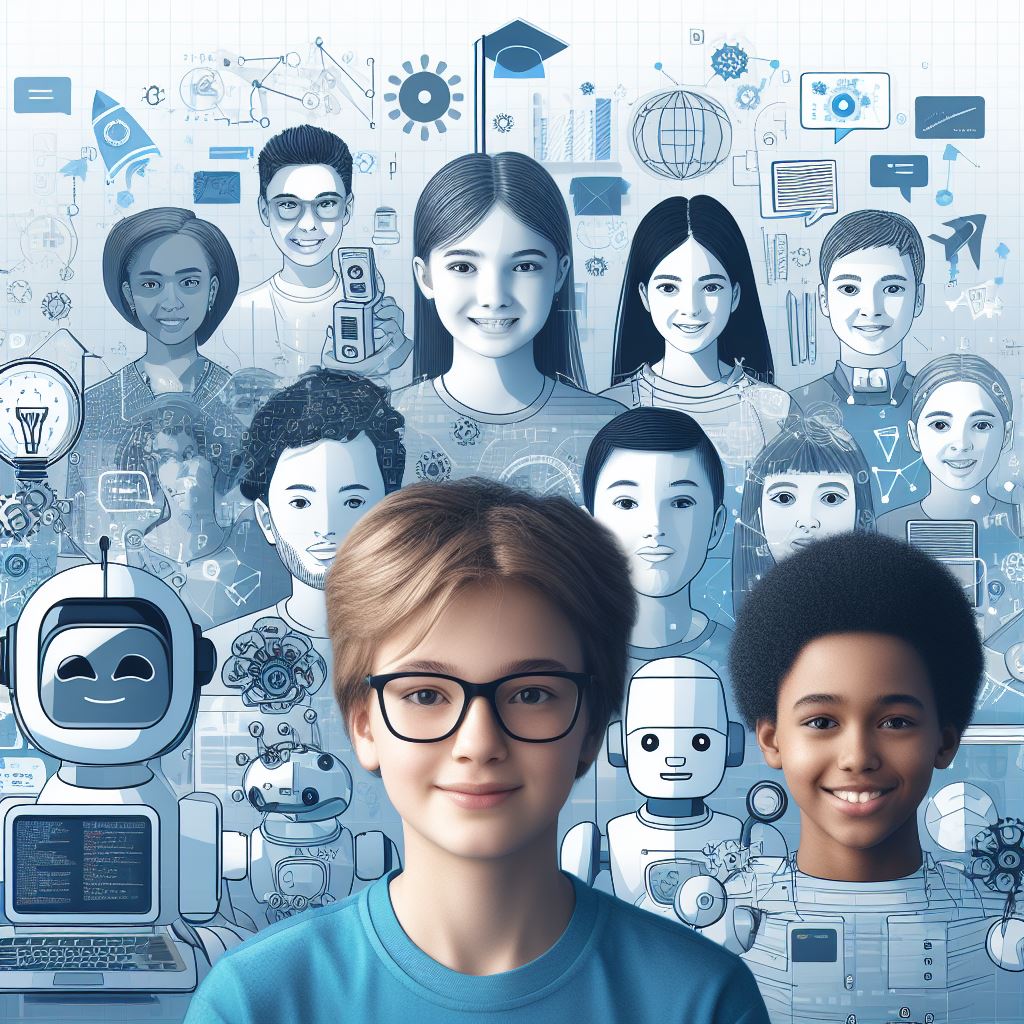Introduction
The rising popularity of coding robots in higher education is undeniable. These robotic tools have gained significant traction among educators and students due to their ability to enhance the learning experience.
Incorporating innovative ways to use coding robots in learning environments has become crucial.
As technology continues to evolve, it is essential to adapt teaching methods to equip students with the skills they need for the future.
Benefits of Coding Robots in Higher Education
Listed below are the key benefits that coding robots offer in higher education
- Enhancing Students’ Problem-Solving and Critical Thinking Skills: Coding robots provide students with practical opportunities to apply their problem-solving and critical thinking skills. By programming and controlling these robots, students learn to analyze, troubleshoot, and find innovative solutions to various challenges.
- Promoting Active and Hands-On Learning: Coding robots engage students in active and hands-on learning experiences. Students actively participate in coding, experimenting, and testing their programming codes, fostering a deeper understanding of coding concepts and principles.
- Fostering Teamwork and Collaboration Among Students: Coding robots encourage teamwork and collaboration among students. Working in groups to program and control these robots requires effective communication, delegation of tasks, and cooperation, enhancing students’ interpersonal and teamwork skills.
- Bridging the Gap between Theoretical Knowledge and Practical Application: Coding robots help bridge the gap between theoretical knowledge and its practical application. Students can physically see the outcome of their coding efforts, reinforcing the concepts they have learned in their programming courses.
Read: Coding Robots and Gender: Breaking Down the Stereotypes
Examples of Coding Robots Used in Higher Education
Coding robots are popular in higher education for hands-on learning.
Three widely used robots are:
- Bee-Bot: Teaches coding basics, spatial awareness, and problem-solving.
- LEGO Mindstorms: Allows building and programming robots for engineering and computer science.
- Sphero: Engages creativity, used in art and design, for programming and controlling.
These robots serve specific educational purposes:
- Bee-Bot teaches programming algorithms and simulates real-world scenarios.
- LEGO Mindstorms helps build prototypes and simulate scenarios in engineering.
- Sphero teaches programming concepts, simulates real-world scenarios, and fosters creativity.
Successful implementations include:
- Arizona State University: LEGO Mindstorms enhanced introductory programming courses.
- Dartmouth College: Bee-Bots developed critical thinking in early childhood education.
- Columbia University: Sphero robots integrated art and technology in interactive installations.
In short, coding robots, like Bee-Bot, LEGO Mindstorms, and Sphero, enhance higher education by offering hands-on learning and fostering critical thinking and creativity.
Their versatile use spans multiple disciplines and learning contexts.
Read: Coding Robots for Seniors: Learning New Skills Later in Life
Innovative Applications of Coding Robots in Higher Education
- Use of coding robots in computer science and engineering courses.
- Integration of coding robots in interdisciplinary studies.
- Incorporating coding robots in art, music, and design courses.
- Expanding coding robot applications to non-technical fields like business and healthcare.
In today’s rapidly evolving technological landscape, coding robots have emerged as an invaluable tool in higher education, providing innovative ways to enhance learning across various disciplines.
Let’s take a closer look at some of the exciting applications of coding robots in higher education:
Use of coding robots in computer science and engineering courses
Computer science and engineering courses traditionally focus on theoretical concepts, which can often be challenging for students to grasp without practical application.
Tech Consulting Tailored to Your Coding Journey
Get expert guidance in coding with a personalized consultation. Receive unique, actionable insights delivered in 1-3 business days.
Get StartedBy incorporating coding robots into these courses, educators can bridge the gap between theory and practice, enabling students to gain hands-on experience in programming and problem-solving.
These coding robots serve as tangible tools that bring complex algorithms and coding challenges to life.
Students can program the robots to perform specific tasks, providing them with a deeper understanding of coding principles and helping them develop essential skills required in the industry.
Integration of coding robots in interdisciplinary studies
Interdisciplinary studies aim to foster a holistic approach to education by integrating knowledge from various fields.
Coding robots can play a pivotal role in this context, as they offer a common ground for students from diverse disciplines to collaborate and learn together.
For instance, a team consisting of computer science, business, and healthcare students can use coding robots to design and develop innovative solutions for the healthcare industry.
By working together, these students not only gain technical skills but also develop an understanding of how their respective disciplines can complement each other.
Incorporating coding robots in art, music, and design courses
While coding robots may seem inherently technical, their applications extend beyond the realms of computer science and engineering.
Art, music, and design courses can greatly benefit from the integration of coding robots as creative tools.
By programming these robots, art and design students can explore the intersection of technology and creativity, creating interactive installations or kinetic sculptures.
This allows them to push the boundaries of traditional art forms and engage with digital mediums in unique and innovative ways.
Expanding coding robot applications to non-technical fields like business and healthcare
In addition to technical disciplines, coding robots have the potential to revolutionize non-technical fields such as business and healthcare.
These robots can introduce students to concepts like automation, artificial intelligence, and data analysis, which are increasingly crucial in these industries.
For business students, coding robots can simulate real-world scenarios, such as supply chain management or financial modeling.
Build Your Vision, Perfectly Tailored
Get a custom-built website or application that matches your vision and needs. Stand out from the crowd with a solution designed just for you—professional, scalable, and seamless.
Get StartedThis hands-on experience equips them with practical skills and a deeper understanding of how technology can drive business innovation.
In healthcare, coding robots can be employed to teach students about medical robotics, patient monitoring systems, or even surgical automation.
By engaging with these cutting-edge technologies, future healthcare professionals can stay abreast of the latest advancements and enhance their problem-solving capabilities.
In review, coding robots have opened up a world of possibilities in higher education.
From computer science and engineering courses to interdisciplinary studies, and from art and design to non-technical fields like business and healthcare, these robots offer innovative ways to engage, educate, and empower students.
By embracing this technological revolution, institutions can ensure that their graduates are well-prepared to thrive in the ever-evolving digital landscape.
Read: Debugging Tips for Mobile App Development

Gain More Insights: Scratch 3.0: New Features and How to Use Them.
Challenges and Solutions in Implementing Coding Robots in Higher Education
While coding robots provide numerous benefits in higher education, their implementation comes with various challenges. In this section, we will explore these challenges and propose possible solutions:
1. Limited availability and affordability of coding robots
One significant challenge is the limited availability and high cost associated with coding robots.
Many educational institutions may struggle to procure an adequate number of robots to meet the demand of students.
Solution: To address this challenge, universities and colleges can seek partnerships with technology companies or apply for grants to acquire coding robots.
Additionally, creating a shared resource pool among different departments can maximize the usage of available robots.
2. Lack of training and support for educators in utilizing coding robots effectively
Educators might lack the necessary training and support needed to effectively integrate coding robots into their curriculum.
Optimize Your Profile, Get Noticed
Make your resume and LinkedIn stand out to employers with a profile that highlights your technical skills and project experience. Elevate your career with a polished and professional presence.
Get NoticedWithout proper guidance, instructors may struggle to facilitate meaningful learning experiences for their students.
Solution: Higher education institutions should provide comprehensive training programs for educators, equipping them with the knowledge and skills required to incorporate coding robots into their teaching.
Collaborating with robotics experts and conducting workshops can enhance educators’ understanding and proficiency in utilizing coding robots.
3. Need for curriculum updates to accommodate coding robot integration
Integrating coding robots into existing curricula can be a challenge, considering the need for curriculum updates and modifications. Traditional courses may not include coding robot-related content, requiring substantial revisions.
Solution: Higher education institutions should review and update their curricula to include coding robot integration.
This can involve creating new courses dedicated to robotics or modifying existing courses to incorporate coding robot activities.
Collaboration between faculty members and robotic experts can ensure the development of well-designed curricula.
4. Addressing potential resistance from traditional teaching methods
Resistance from educators accustomed to traditional teaching methods might hinder the successful implementation of coding robots.
Some instructors may be skeptical about the effectiveness and relevance of coding robots in their classrooms.
Solution: It is essential to address educators’ concerns and build a supportive learning environment.
Providing evidence of coding robots’ positive impact on student engagement and learning outcomes can help convince skeptical educators.
Encouraging open dialogue and offering support during the transition can also alleviate resistance.
In summary, implementing coding robots in higher education is not without challenges.
Limited availability and affordability, lack of training and support for educators, curriculum updates, and potential resistance are significant hurdles.
However, by adopting appropriate solutions, educational institutions can overcome these challenges and unlock the full potential of coding robots in higher education.
Read: Coding Robot Competitions: Prepare Your Kids to Win!
Future Outlook for Coding Robots in Higher Education
In this final section, we will explore the potential advancements, integration of artificial intelligence and machine learning, and possibilities for remote collaboration and virtual learning using coding robots in higher education.
Potential Advancements in Coding Robot Technology for Educational Purposes
- Improved coding languages and libraries specifically designed for educational coding robots.
- Advanced sensors and hardware capabilities to enhance the robot’s interaction with the physical world.
- Integration of augmented reality (AR) and virtual reality (VR) technologies to provide immersive learning experiences.
- Enhanced mobility and navigation features for coding robots to navigate complex environments.
- Integration of advanced communication technologies to enable seamless collaboration with students and professors.
Integration of Artificial Intelligence and Machine Learning in Coding Robot Applications
- Utilization of machine learning algorithms to optimize the robot’s decision-making processes.
- Integration of natural language processing (NLP) techniques to enable human-like interactions with coding robots.
- Personalized learning experiences by analyzing student data using AI algorithms, allowing tailored instruction.
- Automated assessment and feedback systems through AI-powered algorithms for efficient grading processes.
- Integration of computer vision capabilities in coding robots to recognize objects and navigate the environment.
Possibilities for Remote Collaboration and Virtual Learning Using Coding Robots
- Virtual classrooms where students can remotely control and interact with coding robots for hands-on learning experiences.
- Remote collaboration between students and professors through the use of coding robots, enabling interactive discussions and problem-solving.
- Virtual field trips facilitated by coding robots, allowing students to explore diverse environments from the comfort of their classrooms.
- Collaborative coding projects where students from different locations can work together using coding robots as their virtual avatars.
- Remote tutoring and mentoring opportunities, where experts can guide and assist students using coding robots as proxies.
In a nutshell, the future outlook for coding robots in higher education is promising.
With potential advancements in technology, integration of artificial intelligence and machine learning, and possibilities for remote collaboration and virtual learning, coding robots have the potential to revolutionize education.
These innovative tools can provide immersive learning experiences, personalized instruction, and opportunities for collaboration among students and educators, transcending geographical limitations.
As the field continues to evolve, coding robots will undoubtedly play a vital role in shaping the future of education.
Conclusion
Coding robots offer numerous benefits and opportunities in higher education.
They provide hands-on learning experiences, promote problem-solving skills, and enhance students’ understanding of coding principles.
By incorporating coding robots into their curriculum, educators and institutions can empower students to navigate the evolving digital landscape effectively.
It is essential for educators and institutions to explore innovative ways to use coding robots in their teaching and learning practices.
These robots can be integrated into various disciplines, such as computer science, engineering, and even arts, fostering interdisciplinary collaborations and creativity.
Preparing students for the digital future is crucial, and coding education plays a vital role.
By using coding robots, students can develop computational thinking, improve their coding skills, and gain a deeper understanding of technology’s impact on society.
Therefore, educators and institutions should prioritize coding education with the aid of coding robots. By doing so, they can equip students with the necessary skills and knowledge to thrive in the digital era.
It is an investment in their future success and ensures they are well-prepared for the emerging job market.
Coding robots offer an innovative and engaging approach to higher education.
They provide a unique learning experience, foster creativity and collaboration, and prepare students for the digital landscape ahead.
It is imperative that educators and institutions embrace the use of coding robots in their curriculum to empower students and secure their future in the ever-evolving digital world.




